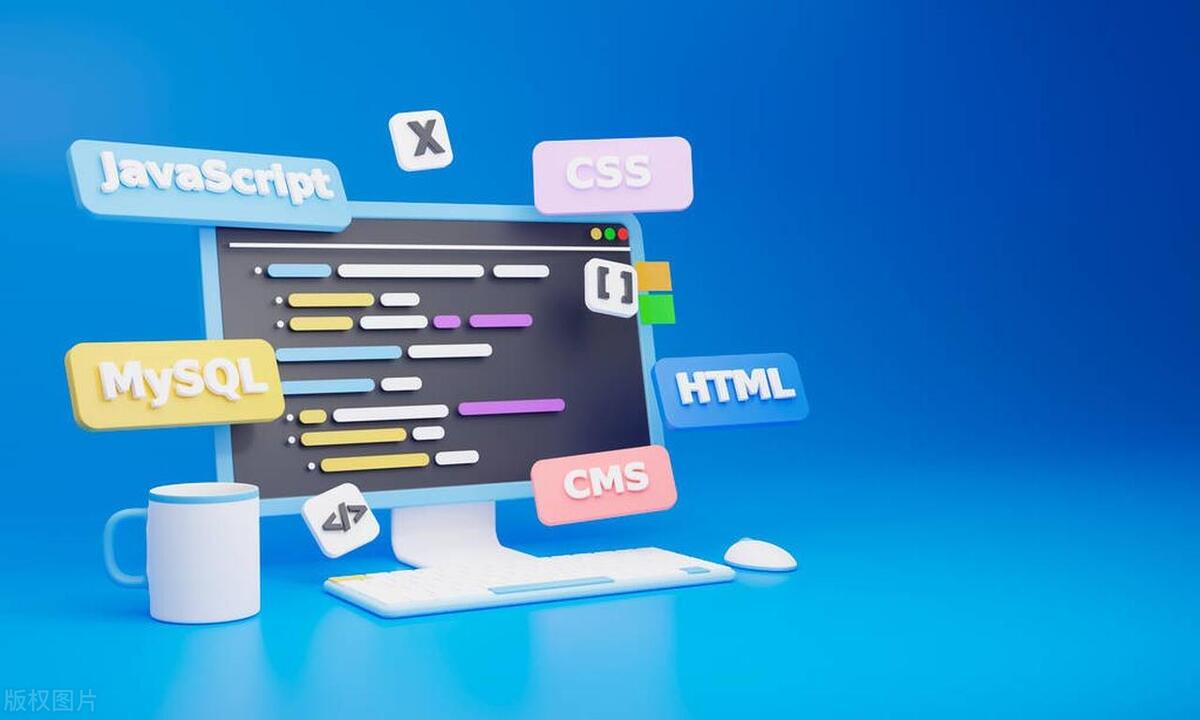 Web Front-end
Web Front-end
 Front-end Q&A
Front-end Q&A
 How to manage dependencies and install packages in a React project?
How to manage dependencies and install packages in a React project?
How to manage dependencies and install packages in a React project?
Jul 13, 2025 am 01:11 AMWhen installing dependencies using npm or yarn, 1. Use npm install package-name or yarn add package-name to install a new package; 2. Use npm install package-name@1.2.3 to install the specified version; 3. Use npm install --save-dev package-name to save as a development dependency. Production dependencies (such as react, react-dom) are used to run applications, and development dependencies (such as eslint, jest) are only used in the development stage. Regularly check for outdated packages using npm outdated, update package-name for npm update package-name for uninstall package-name for unused dependencies, and use depcheck to clean up "ghost dependencies". package.json can configure script commands such as "lint": "eslint ." and path alias such as "@components": "./src/components" to improve development efficiency and code readability.

Management dependencies and installation packages are fundamental in the development process in React projects. Mastering this part can allow you to build and maintain projects more efficiently. Below are some practical suggestions and common precautions.

Install dependencies using npm or yarn
React projects usually use npm or yarn to manage dependencies. They all support installing, updating, and uninstalling packages.

-
Install a new package :
npm install package-name # Or use yarn yarn add package-name
Install the specified version of the package :

npm install package-name@1.2.3
Save as development dependency (such as test tools) :
npm install --save-dev package-name
Generally, when the project is initialized, there will be a package.json file, which records all dependencies and their versions. When you run npm install or yarn without adding parameters, it will automatically install all dependencies listed in the file.
Differentiate between production dependencies and development dependencies
Understanding dependency types helps reduce the final packaging volume and avoids deploying unnecessary libraries to production environments.
- Production dependencies : libraries required when running applications, such as
react,react-dom,axios, etc. - DevDependencies : Tools only used in the development and construction stages, such as
eslint,jest,webpack, etc.
If you are not sure which category a package belongs to, you can see if it is still used after the build is completed. If not, it should be classified as devDependencies.
Update and clean up dependencies
Over time, dependency packages may be updated or no longer used, and regular maintenance can improve security and stability.
Check out outdated packages :
npm outdated
Update a single package :
npm update package-name
Remove unused dependencies :
npm uninstall package-name
Sometimes you will find some "ghost dependencies" - these packages are not declared in package.json , but appear in node_modules . This situation can be detected and cleaned by tools such as depcheck .
Use package.json alias and scripts
In addition to managing dependencies, package.json can also configure some practical functions:
Set script command :
"scripts": { "start": "react-scripts start", "build": "react-scripts build", "lint": "eslint." }Then you can do it via
npm run lintoryarn lint.Set path alias (with webpack) :
"alias": { "@components": "./src/components" }This way you can write
import Button from '@components/Button'in your code to improve readability.
Basically that's it. Dependency management may seem simple, but if you don't pay attention to version control and classification, it's easy to make the project bloated or even make mistakes. Keeping a clear structure and regular cleaning will make your React project healthier.
The above is the detailed content of How to manage dependencies and install packages in a React project?. For more information, please follow other related articles on the PHP Chinese website!

Hot AI Tools

Undress AI Tool
Undress images for free

Undresser.AI Undress
AI-powered app for creating realistic nude photos

AI Clothes Remover
Online AI tool for removing clothes from photos.

Clothoff.io
AI clothes remover

Video Face Swap
Swap faces in any video effortlessly with our completely free AI face swap tool!

Hot Article

Hot Tools

Notepad++7.3.1
Easy-to-use and free code editor

SublimeText3 Chinese version
Chinese version, very easy to use

Zend Studio 13.0.1
Powerful PHP integrated development environment

Dreamweaver CS6
Visual web development tools

SublimeText3 Mac version
God-level code editing software (SublimeText3)

Hot Topics
 How can CSS be used to implement dark mode theming on a website?
Jun 19, 2025 am 12:51 AM
How can CSS be used to implement dark mode theming on a website?
Jun 19, 2025 am 12:51 AM
ToimplementdarkmodeinCSSeffectively,useCSSvariablesforthemecolors,detectsystempreferenceswithprefers-color-scheme,addamanualtogglebutton,andhandleimagesandbackgroundsthoughtfully.1.DefineCSSvariablesforlightanddarkthemestomanagecolorsefficiently.2.Us
 Can you explain the difference between em, rem, px, and viewport units (vh, vw)?
Jun 19, 2025 am 12:51 AM
Can you explain the difference between em, rem, px, and viewport units (vh, vw)?
Jun 19, 2025 am 12:51 AM
The topic differencebetweenem, Rem, PX, andViewportunits (VH, VW) LiesintheirreFerencepoint: PXISFixedandbasedonpixelvalues, emissrelative EtothefontsizeFheelementoritsparent, Remisrelelatotherootfontsize, AndVH/VwarebaseDontheviewporttimensions.1.PXoffersprecis
 What are the key differences between inline, block, inline-block, and flex display values?
Jun 20, 2025 am 01:01 AM
What are the key differences between inline, block, inline-block, and flex display values?
Jun 20, 2025 am 01:01 AM
Choosing the correct display value in CSS is crucial because it controls the behavior of elements in the layout. 1.inline: Make elements flow like text, without occupying a single line, and cannot directly set width and height, suitable for elements in text, such as; 2.block: Make elements exclusively occupy one line and occupy all width, can set width and height and inner and outer margins, suitable for structured elements, such as; 3.inline-block: has both block characteristics and inline layout, can set size but still display in the same line, suitable for horizontal layouts that require consistent spacing; 4.flex: Modern layout mode, suitable for containers, easy to achieve alignment and distribution through justify-content, align-items and other attributes, yes
 What are CSS Houdini APIs, and how do they allow developers to extend CSS itself?
Jun 19, 2025 am 12:52 AM
What are CSS Houdini APIs, and how do they allow developers to extend CSS itself?
Jun 19, 2025 am 12:52 AM
CSSHoudini is a set of APIs that allow developers to directly manipulate and extend the browser's style processing flow through JavaScript. 1. PaintWorklet controls element drawing; 2. LayoutWorklet custom layout logic; 3. AnimationWorklet implements high-performance animation; 4. Parser&TypedOM efficiently operates CSS properties; 5. Properties&ValuesAPI registers custom properties; 6. FontMetricsAPI obtains font information. It allows developers to expand CSS in unprecedented ways, achieve effects such as wave backgrounds, and have good performance and flexibility
 What is the significance of Vue's reactivity transform (experimental, then removed) and its goals?
Jun 20, 2025 am 01:01 AM
What is the significance of Vue's reactivity transform (experimental, then removed) and its goals?
Jun 20, 2025 am 01:01 AM
ReactivitytransforminVue3aimedtosimplifyhandlingreactivedatabyautomaticallytrackingandmanagingreactivitywithoutrequiringmanualref()or.valueusage.Itsoughttoreduceboilerplateandimprovecodereadabilitybytreatingvariableslikeletandconstasautomaticallyreac
 How can CSS gradients (linear-gradient, radial-gradient) be used to create rich backgrounds?
Jun 21, 2025 am 01:05 AM
How can CSS gradients (linear-gradient, radial-gradient) be used to create rich backgrounds?
Jun 21, 2025 am 01:05 AM
CSSgradientsenhancebackgroundswithdepthandvisualappeal.1.Startwithlineargradientsforsmoothcolortransitionsalongaline,specifyingdirectionandcolorstops.2.Useradialgradientsforcirculareffects,adjustingshapeandcenterposition.3.Layermultiplegradientstocre
 How can internationalization (i18n) and localization (l10n) be implemented in a Vue application?
Jun 20, 2025 am 01:00 AM
How can internationalization (i18n) and localization (l10n) be implemented in a Vue application?
Jun 20, 2025 am 01:00 AM
InternationalizationandlocalizationinVueappsareprimarilyhandledusingtheVueI18nplugin.1.Installvue-i18nvianpmoryarn.2.CreatelocaleJSONfiles(e.g.,en.json,es.json)fortranslationmessages.3.Setupthei18ninstanceinmain.jswithlocaleconfigurationandmessagefil
 How does provide and inject allow for deep component communication without prop drilling in Vue?
Jun 20, 2025 am 01:03 AM
How does provide and inject allow for deep component communication without prop drilling in Vue?
Jun 20, 2025 am 01:03 AM
In Vue, provide and inject are features for directly passing data across hierarchical components. The parent component provides data or methods through provide, and descendant components directly inject and use these data or methods through inject, without passing props layer by layer; 2. It is suitable for avoiding "propdrilling", such as passing global or shared data such as topics, user status, API services, etc.; 3. Note when using: non-responsive original values ??must be wrapped into responsive objects to achieve responsive updates, and should not be abused to avoid affecting maintainability.






